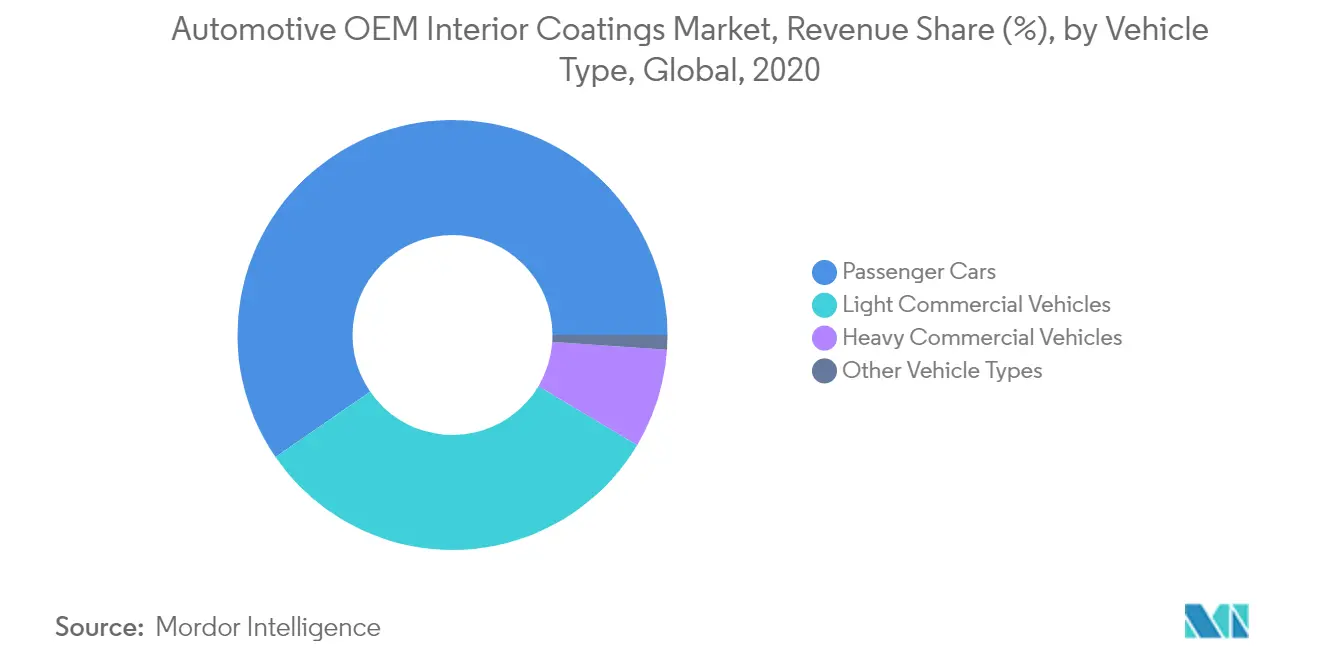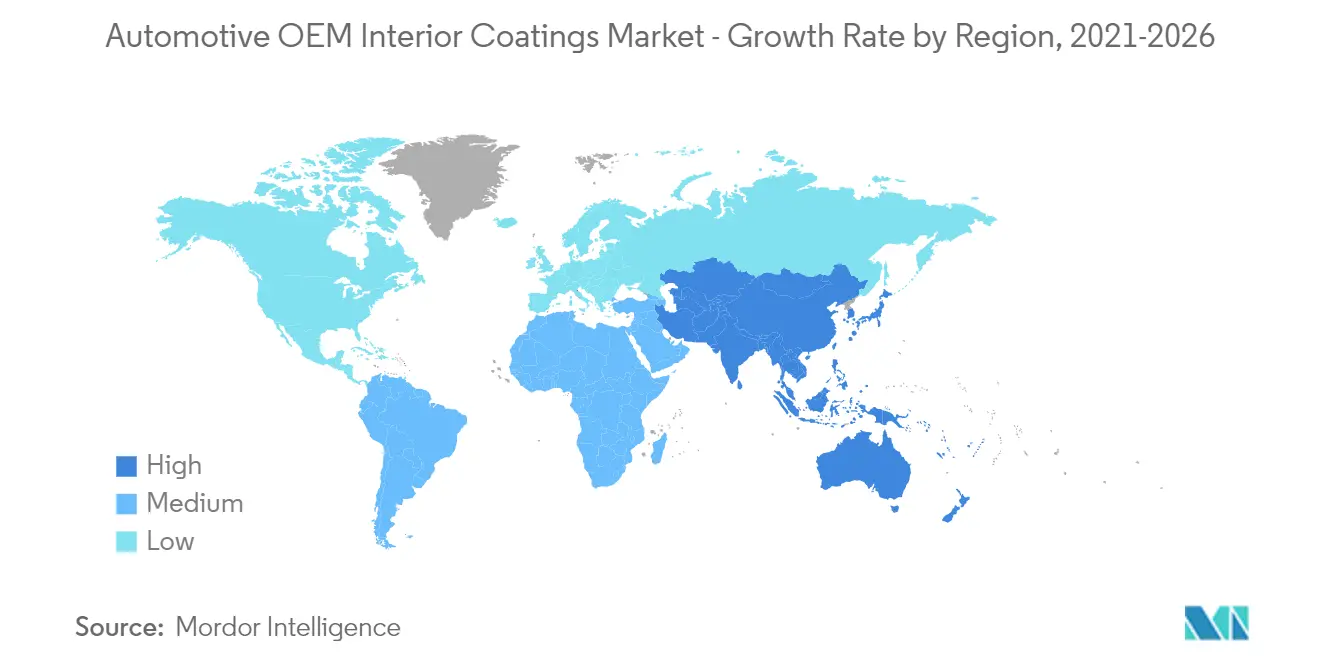Market Trends of Automotive OEM Interior Coatings Industry
This section covers the major market trends shaping the Automotive OEM Interior Coatings Market according to our research experts:
Passenger Car Segment to Contribute Significant Demand to the Market
- The passenger cars segment has the largest demand in the market studied.
- In passenger car interiors, various types of single and multi-component and solvent-borne and waterborne coatings are used for coating various substrates, such as ABS and polycarbonate materials. Laser etchable coatings are also used for these purposes.
- They are used for coating various interiors, such as center clusters, meter clusters, instrument panels, speaker grills, armrest and armrest bezels, steering wheels, door trim, and handles. The important characteristics of these coatings are high gloss and a smooth finish.
- The world passenger car production has been in a steady decline since 2017. The COVID-19 has further aggravated this decline in 2020, as a total of 55.83 million cars were produced in 2020, a steady decline from 67.15 million units and 71.75 million units in 2019 and 2018, respectively, was registered.
- According to OICA, in the first half of 2021 (January-June), the global passenger vehicle production has increased by more than 26% when compared to the same period in 2020. In the first six months, the production has increased from 2,23,14,111 units in 2020, to reach about 2,81,48,90 in 2021. However, the production is still less by 15% compared to 2019, which is 3,32,48,444 units.
- However, the demand for automotive OEM interior coatings from the passenger cars segment is expected to increase with a higher rate relative to the commercial and other vehicles segments post-recovery, owing to the change in mobility preferences for personal mode of transport in the wake of social distancing measures.

Asia-Pacific Region to dominate the Market
- Asia-Pacific is the largest market for automotive OEM interior coatings. Growth in the regional market is driven by the huge automotive production base coupled with increased investments in the Asia-Pacific region, primarily from major economies, such as China, India, and ASEAN countries.
- According to OICA, around 25.23 million, 8.07 million, 3.51 million, and 3.39 million units of vehicles were produced in China, Japan, South Korea, and India, respectively, contributing to over 50% of the global automobile production in the year 2020.
- The Chinese automotive manufacturing industry is the largest in the world. The industry witnessed a slowdown in 2018, wherein the production and sales declined. A similar trend continued, with the production witnessing a 7.5% decline during 2019. The performance of the automotive industry was affected by the economic shifts and China's trade war with the United States.
- The Chinese government is planning to have a minimum of 5,000 fuel cell electric vehicles by 2025 and 1 million by 2030. With government promoting the use of electric, hybrid, and fuel cell electric vehicles, the market is expected to grow in the future.
- India is a growing economy and holds great potential for future market opportunities. The country's economy is expected to further grow in the coming years. Despite demonetization and GST reforms affecting the national production volume, the impact of these reforms is slowly waning. Moreover, the country's government has been taking initiatives to attract Foreign Direct Investments (FDIs) in the manufacturing sector, to make India a manufacturing hub.
- The automotive industry is one of the largest manufacturing sectors in the country and contributes about 7.5% to the nation's GDP, by employing more than 37 million workers. In 2018, India became the fourth-largest automobile market in the world and the seventh-largest commercial vehicle manufacturer.
- According to the Department of Promotion Industry and Internal Trade (DPIIT) around USD 24.5 million worth FDIs were attracted by the Indian automobiles market between the period of April 2000 to June 2020. Factors such as these will show a significant impact on the automotive OEM interior coatings market in the country.
- The Indian government has recently reduced customs duty on the import of components for electric vehicles from a range of 15-30% to 10-15%, along with tax breaks and fiscal packages for the automotive industry, to fight the recent demand shocks amid COVID-19 crisis.
- Overall, the demand for the automotive OEM interior coatings is expected to be moderate to low during the forecast period, while the automotive industry in the country will try to recover from this crisis in the coming years.


